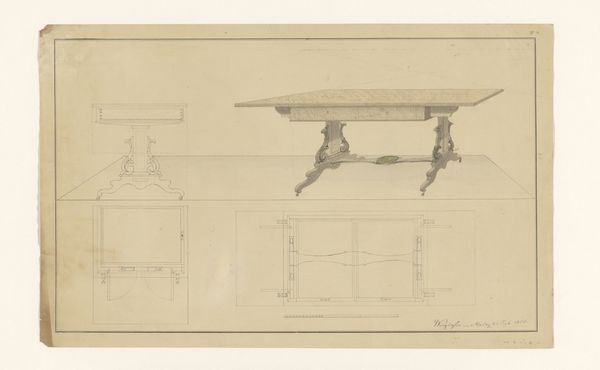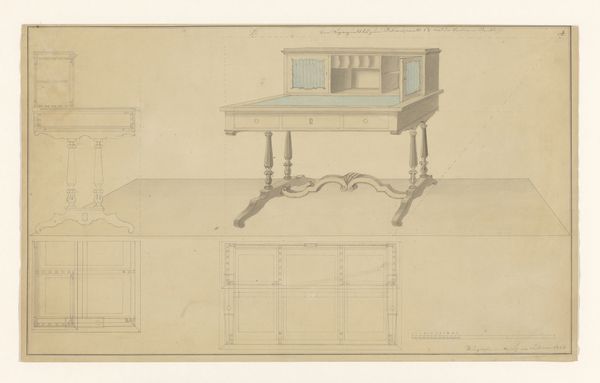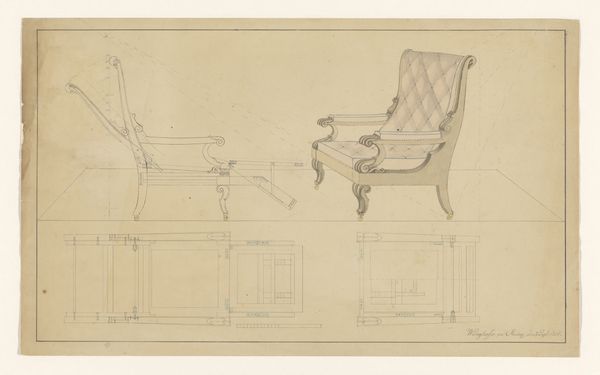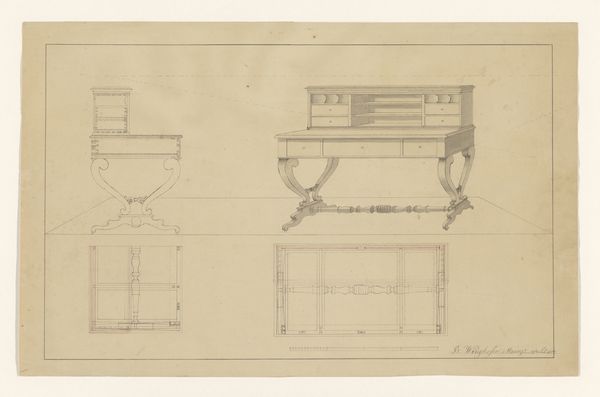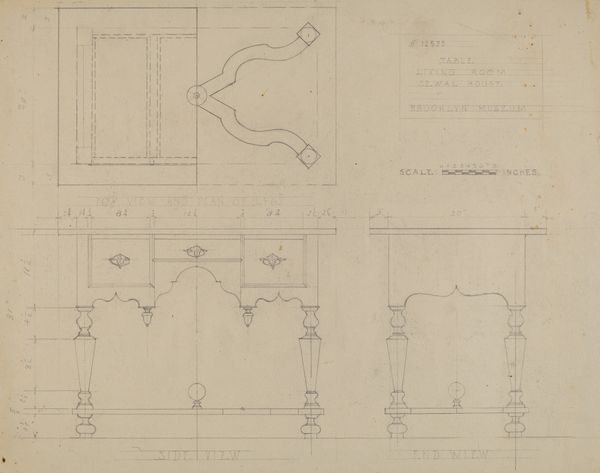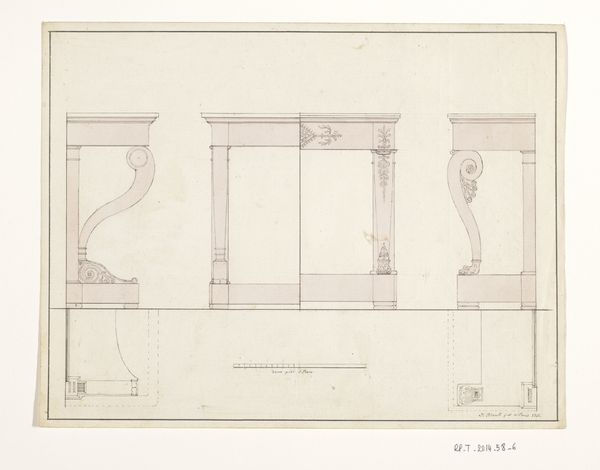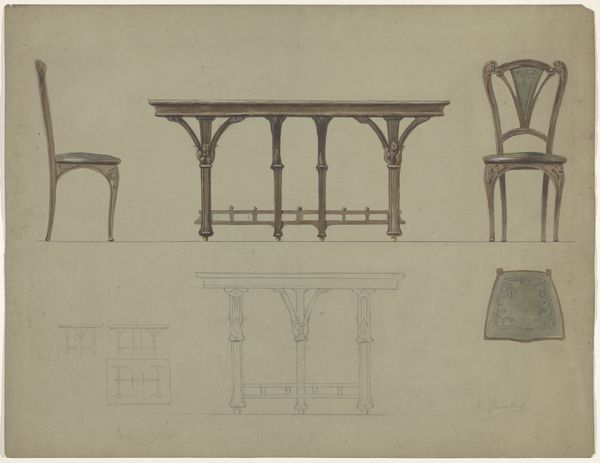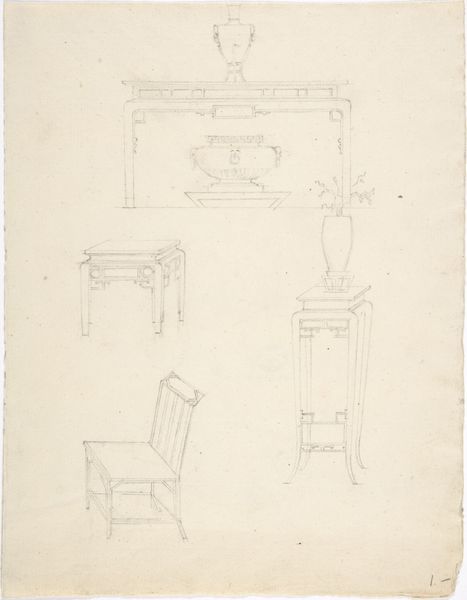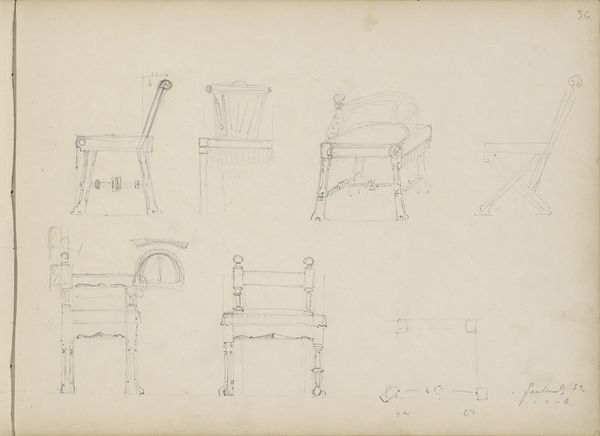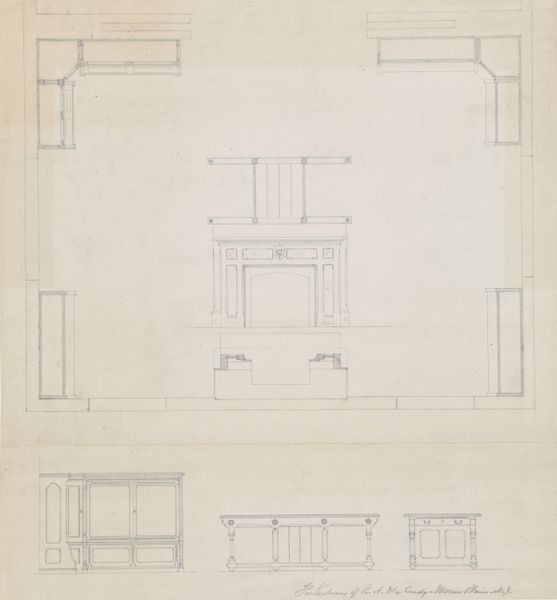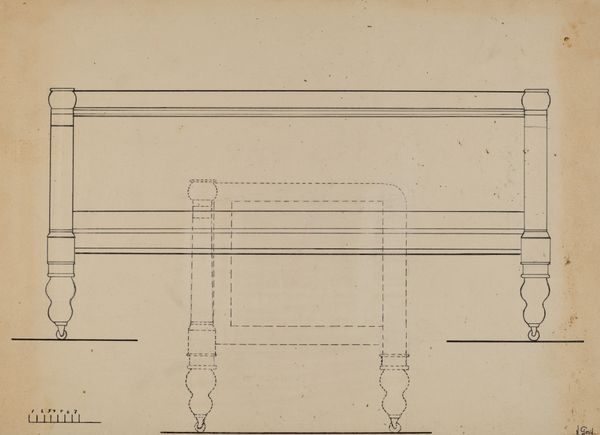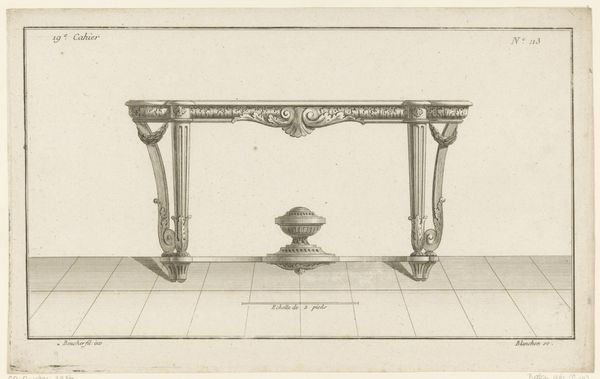
Zijaanzicht van een étagère, ontwerp voor een klaptafel met twee zijaanzichten en constructiedetails, ontwerp voor een rond tafeltje met frontaal aanzicht, daaronder plattegronden 1852
0:00
0:00
drawing, paper, pencil, architecture
#
drawing
#
paper
#
geometric
#
pencil
#
architectural drawing
#
architecture
Dimensions: height 289 mm, width 471 mm
Copyright: Rijks Museum: Open Domain
Curator: So, here we have "Zijaanzicht van een étagère, ontwerp voor een klaptafel met twee zijaanzichten en constructiedetails, ontwerp voor een rond tafeltje met frontaal aanzicht, daaronder plattegronden"— a design drawing, rather intricately detailed, by B. Winghofer, dating to 1852. What jumps out at you? Editor: The clarity of it, almost delicate despite being technical. It’s odd to think of furniture design as something emotional, but I am finding it visually peaceful to view this sheet filled with geometric shapes and lines on paper. The pale pencil brings forth a soft mood, I must say! Curator: Absolutely. It is fascinating how Winghofer merges artistry with practical planning. Pencil on paper allows this beautiful combination to take place; look at the material reality embedded within. It highlights the link between imagination and utility. Also, considering 1852—the growing industrialization! These meticulously hand-drawn designs become statements. They speak about skilled craftsmanship in a rapidly changing landscape. Editor: I agree, there's definitely a push and pull at play. While he includes technical specs, Winghofer elevates these objects with ornate detailing—see the legs on the drop-leaf table! I imagine that these embellishments represent luxury and leisure; they aren't merely functional drawings; there’s definitely a status element within those small decisions. It's less "factory floor," and more "drawing room dream." Curator: It’s also the precision of lines and form laid bare. Here is design stripped to its foundational elegance; no distracting ornamentation beyond the inherent. I admire seeing labor concentrated into this delicate trace of construction! Think, if one were to physically craft from Winghofer’s template… a direct relationship between thought, process and form… What else resonates? Editor: It reminds me how much design—especially for everyday things—impacts us. We touch and feel tables like these; they become part of the theater of daily life. How beautiful to find emotion or reflect feelings about material as mundane as furniture designs. Perhaps Winghofer hoped others felt as captivated, I know I certainly did looking deeper. Curator: Well said. An intriguing view on materials, emotions, and utilitarian items which now causes further reflection on production processes.
Comments
No comments
Be the first to comment and join the conversation on the ultimate creative platform.
